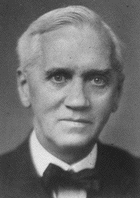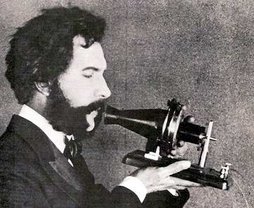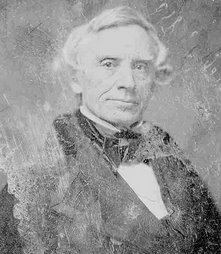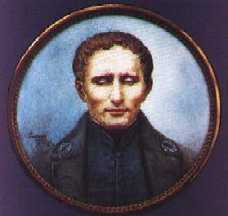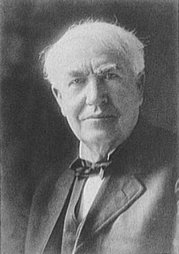Alexander Fleming, Scottish, famous bacteriologist, he discovered penicillin in 1931, that attacks germs and it does not affects white globules of the human organism.
Alexander Graham Bell, scientist and English inventor, attributes the invention to him of the telephone and among others, a system to limit the effects of the deafness.
Samuel Morse, inventor and American painter. He invented the telegraph and the code which takes his name.
Louis Braille, when he was 15 years old, he got blind as a result of an accident, reason why he invented a system of reading and writing by touching or making points.
Thomas Edison, he was an American inventor who has more than thousand inventions, including the small pump and the phonograph.
Penicillin, kills the bacteria as prohibiting its growth.
Telephone, designed device of communication to transmit conversations by electrical signals.
Telegraph, system of communication able to produce and to receive signals according to a code of electrical impulses.
Morse code, language based on the transmission and reception of messages using sounds or rays of light. It also has an alphabet made up of points and rays.
Code Braille, alphabet that consists of points, therefore the blind can read by the sense of the tact.
Small pump, also known like light ball. It generates light with electricity that happens through a metal cord.
Activity 1
Relate
a) Alexander Fleming
b) Alexander Graham Bell
c) Samuel Morse
d) Louis Braille
e) Thomas Edison
(_) Telephone
(_) Telegraph y Morse Code
(_) Small pump
(_) Braille Code
(_) Penicillin
Activity 2
Draw your own invention and present it to your friends. (¿Why? ¿What for? ¿How does it works? ¿Objective?)
More Information
Educar.org y eaprender.org http://www.educar.org/inventos/
Museo del Niño y Centro de Documentación Histórica de la Escuela http://www.museodelnino.es/expo_tmp/expo_tmp03/inventos_tbo/ivtos_tbo.htm
Diccionario Juvenil Ilustrado, Editorial Cumbre S.A., México Enciclopedia Salvat
Tareas Ya http://www.tareasya.com/
Wikipedia http://www.wikipedia.org/
SEP http://www.sep.gob.mx/wb2/sep/sep_297_la_sep_para_los_nino
Evaluation
The first activity will be evaluated with 5 points. Each answer will be one point, having as a result 5 points if everything is correct.
In the second activity will be evaluated the creativity of the studentcounting 5 points. It also will be evaluated the use of english and the description of the invention, counting 5 points.
Conclusion
The objective of this activity is to teach the students new inventors, who have been very important but also explain them their inventions and its functions.
